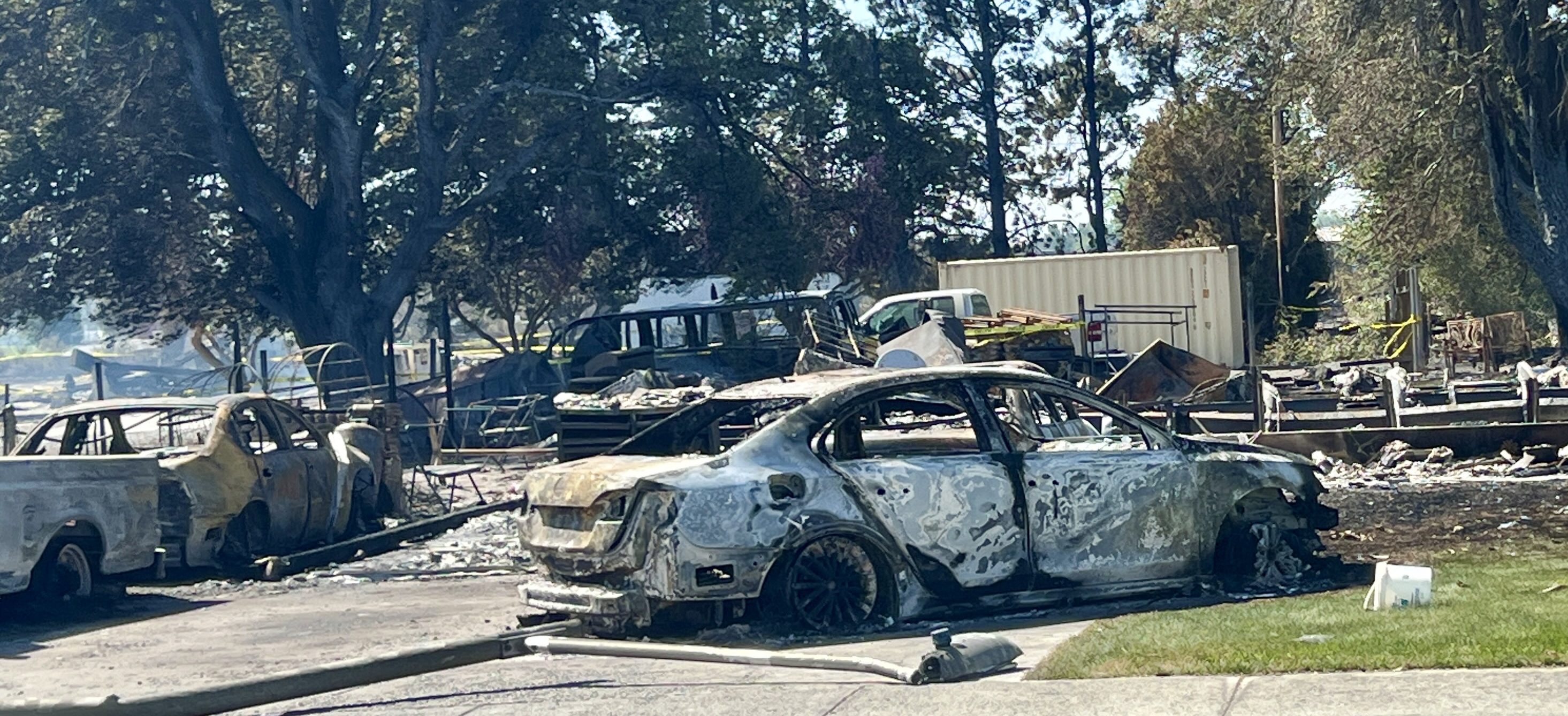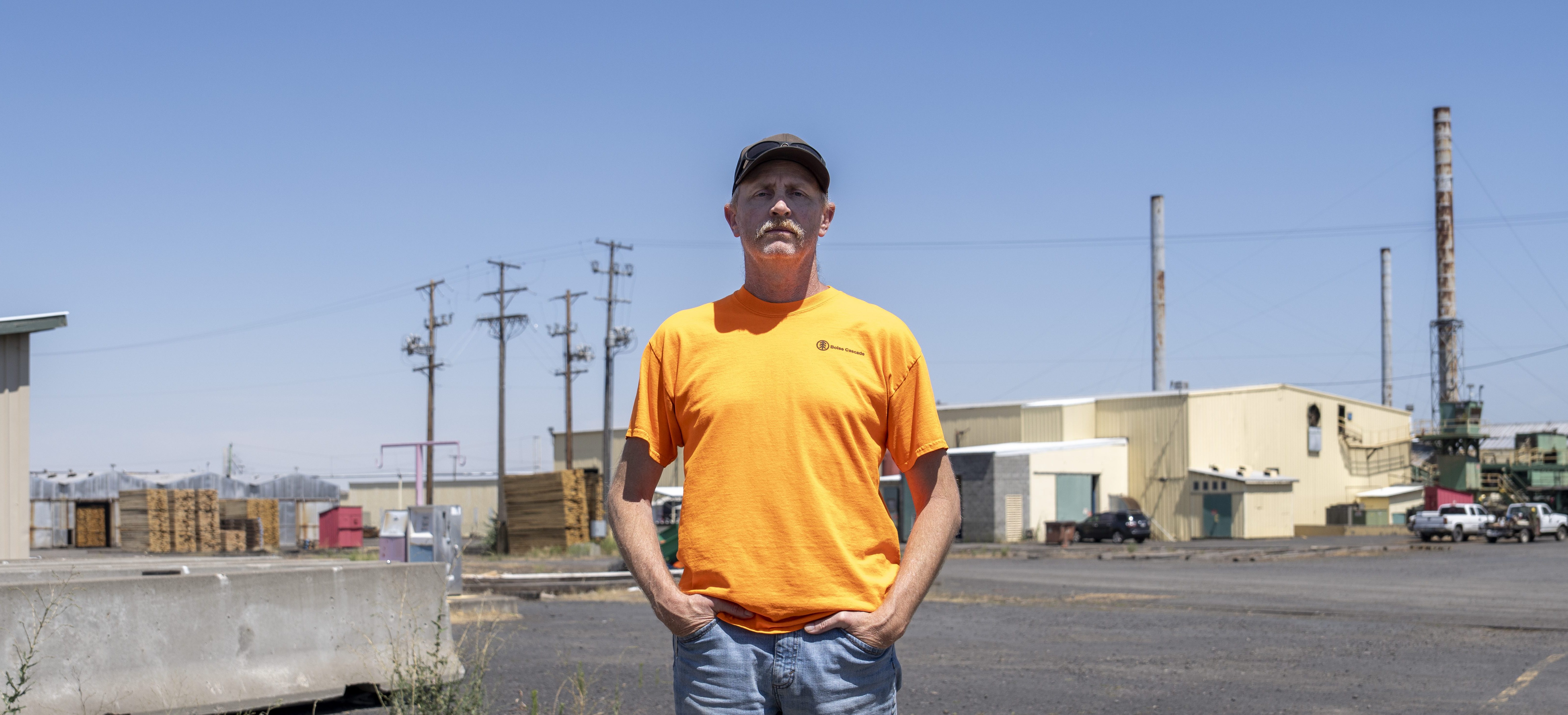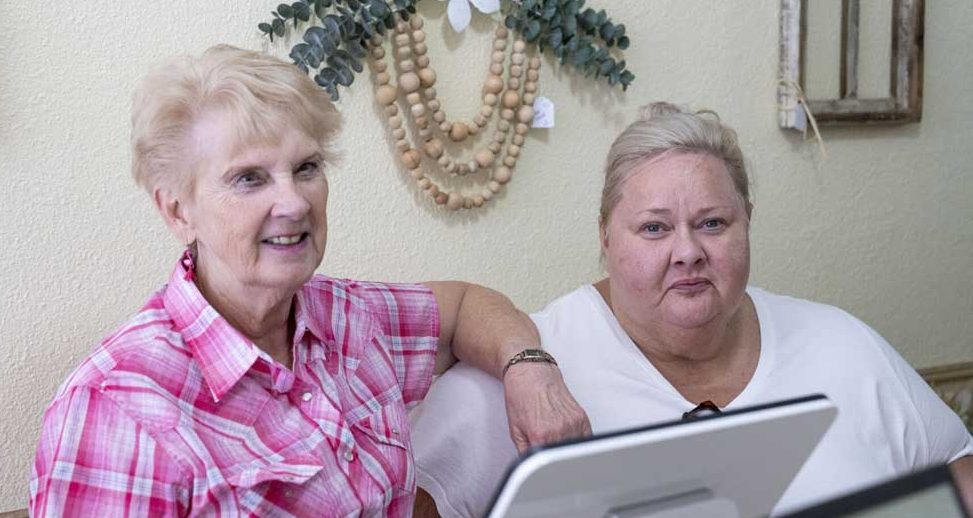The fires next time: Lostine Canyon, other communities, review wildfire response
Published 7:00 am Tuesday, November 8, 2022

- Evidence of the summer’s Strugill Fire can be seen along the right side of this recent photograph, looking north down the Minam River.
LOSTINE — Lostine Canyon residents and partners of the area’s Firewise community put their heads together Saturday and mulled over what went well during the summer fire season and areas they need to improve.
For the most part, community members agreed their preparedness before the fire season and their response to the Sturgill, Goat Mountain, Nebo and Double Creek fires in August and September went well.
Trending
“It’s official. I think it’s safe to say fire season is over,” said Michael Eng, resident leader of the Lostine Canyon Firewise Community — during a snowstorm outside the South Fork Grange in Lostine. “We’re here to talk about what happened during the last event and what we need to do ahead of the next one.”
The wildfire-prone canyon was threatened beginning in late August by lightning-caused fires in the Eagle Cap Wilderness — the Sturgill, Goat Mountain and Nebo fires — which led to some recommendations that residents prepare for evacuation. The most severe evacuation recommendation — Level 3 — never was implemented by the Wallowa County Sheriff’s Office, which is responsible for such evacuations.
The fires, which started Aug. 22-29, were considered 100% contained as of Oct. 25. The final acreage tally on the four was Double Creek 171,532 acres, Sturgill 23,507 acres, Nebo 12,609 acres and Goat Mountain 584 acres for a total of 208,232 acres, according to Brian Anderson, district ranger for the Wallowa-Whitman National Forest.
Not if, but when“Several years ago, we talked about it’s not a matter of if, it’s a matter of when,” Eng said. “We live in a wildfire-prone area and we want to talk a little bit more about what we can do as a community, as homeowners, so we can live up here safely next to the woods and the wilderness area so we don’t have to stress out every wildfire season and worry we’re going to lose everything we own.”
The national Firewise USA recognition program provides a collaborative framework to help neighbors in a geographic area get organized, find direction and take action to increase the ignition resistance of their homes and community and to reduce wildfire risks at the local level, according to the Firewise website. Any community that meets a set of voluntary criteria on an annual basis and retains an “In Good Standing” status may identify itself as a Firewise site.
Lostine received its Firewise certification in June 2019. Since then, three more Firewise communities in Wallowa County have been certified, at South Wallowa Lake, Hurricane Creek and Mount Joseph. Representatives of some of those communities were among the 40-plus people who attended Saturday’s meeting and the 14 who attended via Zoom.
Trending
Personal storiesEng asked people attending to introduce themselves by stating their names, where they lived, whether they were full- or part-time residents of the canyon and to discuss their moments of greatest concern during the recent fire season.
He opened the discussion saying he lives near the Six-Mile Bridge — a one-lane structure that is largely considered a bottleneck for the Lostine River Road. He said later that from what he’s heard, it’s high on the county’s list of bridges to replace, although he doesn’t know when that will happen.
Eng said he and wife, Monica, have lived there full-time since 2013. Their time of greatest concern was Sept. 7, when a “red-flag warning” about high fire danger went out because of high winds and the proximity of the Goat Mountain and Sturgill fires. He said he was keeping track of the blazes online and could see them moving toward the canyon.
“Fortunately, that red-flag warning didn’t turn out to be as bad as predicted, but I remember being caught up in that,” Eng said.
Kathleen Wecks, who lives on Tamarack Road with her husband, Paul, saw helicopters hauling water over their property to help douse the fire.
She said she got a bit worried, but “We just prayed for protection or that God would help us start over.”
Sarah Smith, a resident in the High Lostine Estates, was on Eagle Cap, and could see the potential escape route down Lostine River Road. She wondered how all the people in the canyon would get out, especially over the Six-Mile Bridge.
Another woman wasn’t so concerned for her own property, “because I had a fire truck parked in my driveway.”
Gary Willis, a retired fire chief and part-time resident of Tamarack Road, believed he’d secured his own property well, though he still had some work to do.
“As far as I’m concerned, I didn’t really have any concerns for my personal property,” Willis said. My concern was safety for my neighbors.”
Job well doneFor the most part, those in attendance agreed the community was well-prepared.
Ron Polk, president of the Lostine Homeowners Association, said he had been in contact with representatives of State Farm Insurance, which insures most of the Firewise homes. He said State Farm employees were among the first on the scene.
“One of them sent me a note that said … the one universal thought in your community is it’s prepared like none I’ve ever seen.”
One woman said she had tree branches that were hanging too close to her house and needed them trimmed.
“I promised both of my sons that at 75, I would not go up in the tree with a chainsaw,” she said, and laughed, adding that firefighters trimmed the branches for her.
“I want to thank everybody for going above and beyond,” she said.
Future needsPolk said it would’ve been good to have a dry run once the community had accomplished all its preparations.
However, he said, the relatively low-key fire season may have been just what they needed.
“I’m not sure we could’ve ever had a dry run,” he said. “I think this was as good as we can get to a dry run.”
Eng said the Firewise community needs to update its action plan to continue to qualify for certification. Certification is important to qualify for homeowners’ insurance discounts.
He asked the crowd what contact methods they believe worked the best. Many indicated personal, door-to-door contact seemed most effective.
Eng also said it’s important to make sure all homeowners provide their email addresses and other contact information.
But many agreed the terrain of the canyon made cellphone, internet and even radio service unreliable.
“Any way of trying to communicate up in the canyon doesn’t work,” homeowner Mickey McClendon said. “We don’t get internet, we don’t get radio at all. Somebody coming to the front door is really just about the only way to tell us what’s going on.”
Eng emphasized that improving infrastructure is part of what needs to be done.
“There’s a lot of (state) money coming through to improve rural broadband,” he said. “It is an ongoing issue and we want to emphasize that when we have these discussions about rural broadband it’s about emergency notification. That’s a piece of it. And when we’re living in a remote area, and we can’t safely communicate and evacuate people. There are a lot of reasons why we need that infrastructure. That whole issue of infrastructure improvement and broadband is in a different forum, but we want to make sure that the issue of wildfire preparedness and emergency evacuation is part of that discussion, because it is a big piece.”
A common theme of the discussion Saturday, was that while the community did well, residents don’t want to get complacent.
“I think we can all acknowledge that things went really well,” Eng said. “But I’m not sure we can count on that next time. … We still need to be as proactive as possible.”









